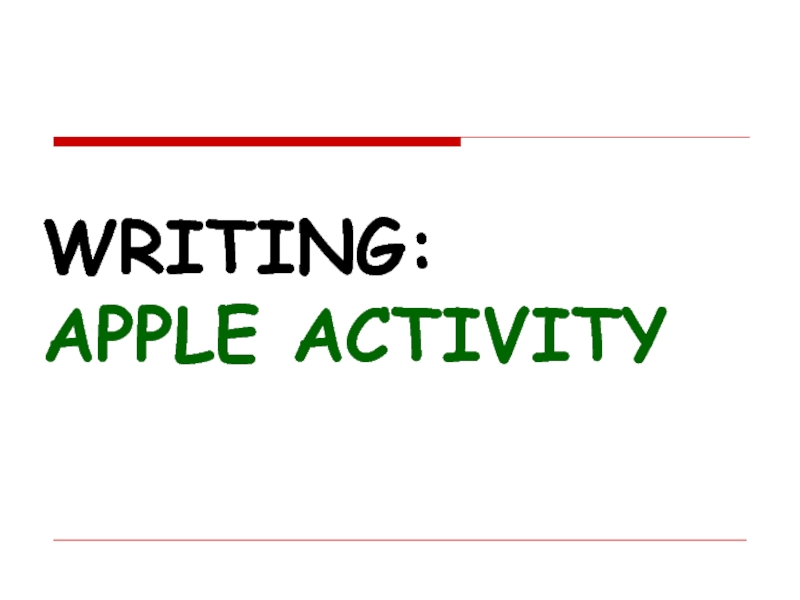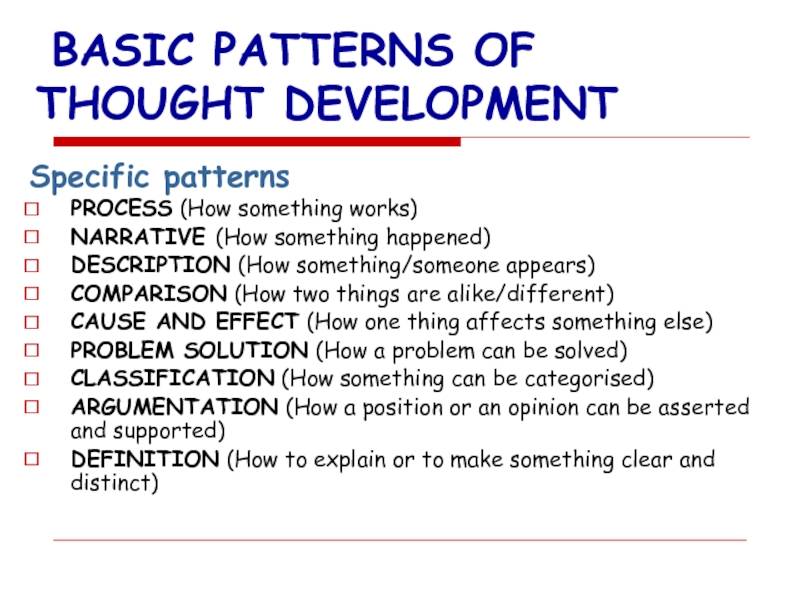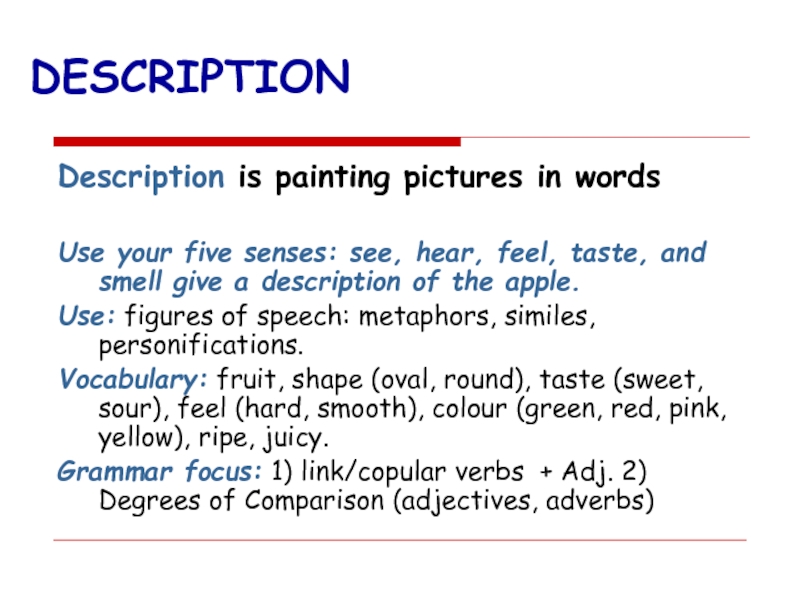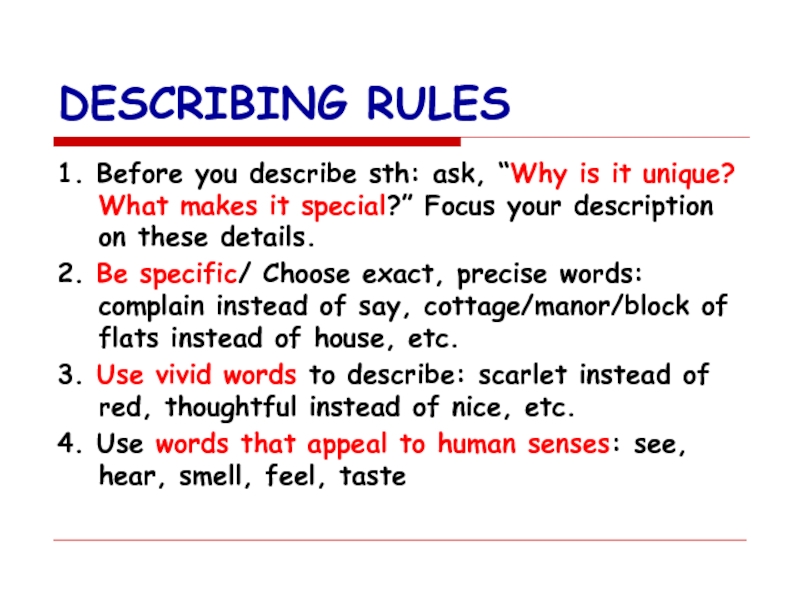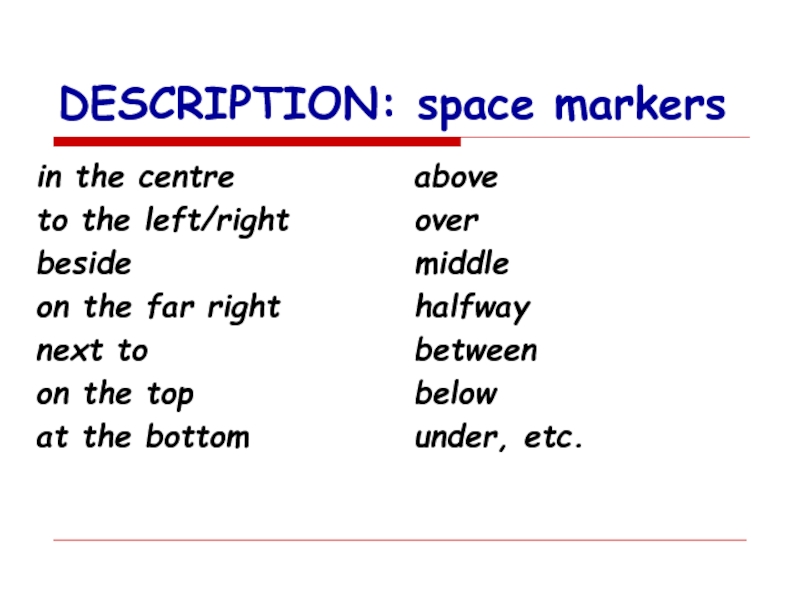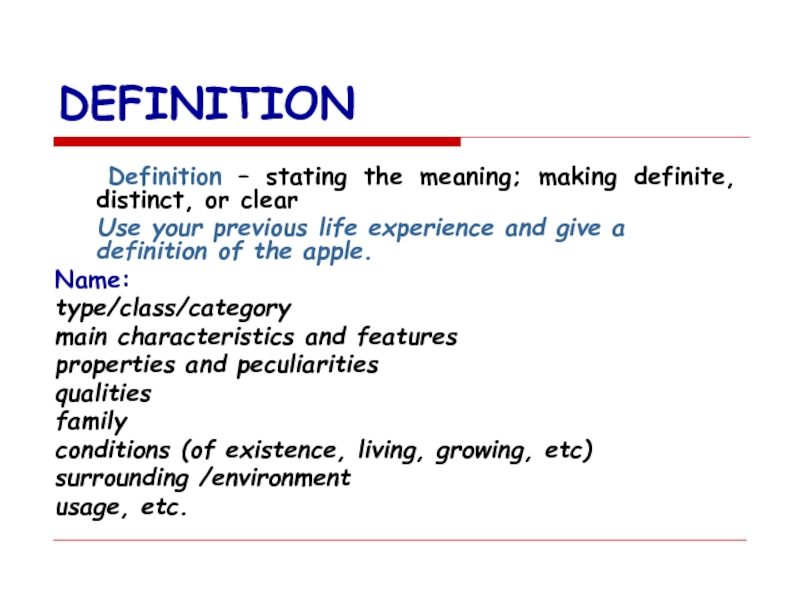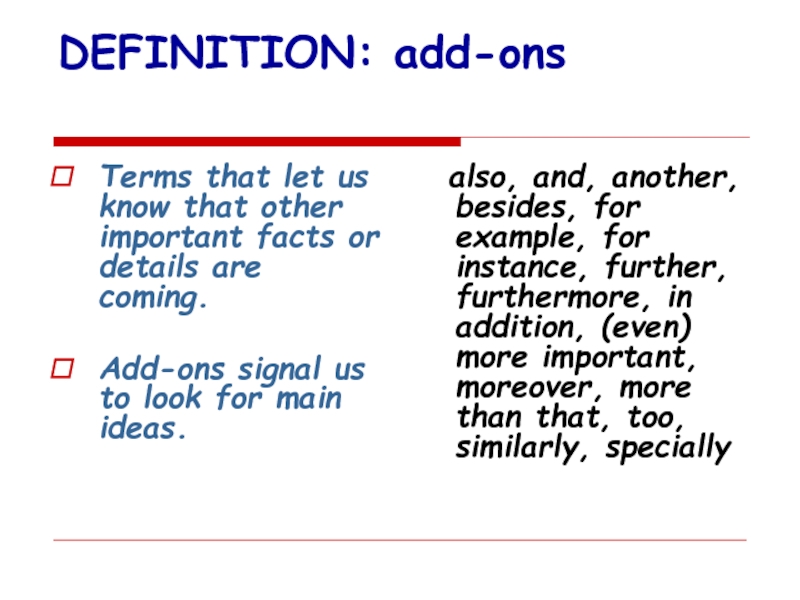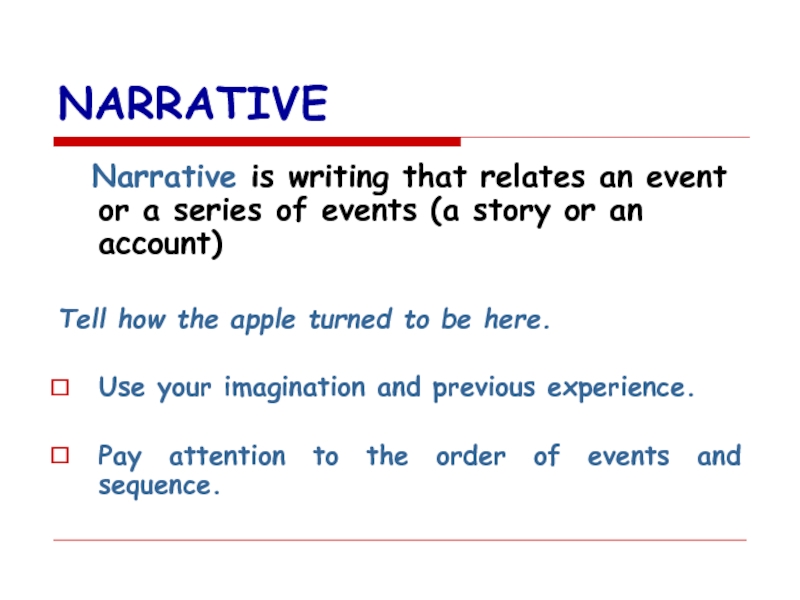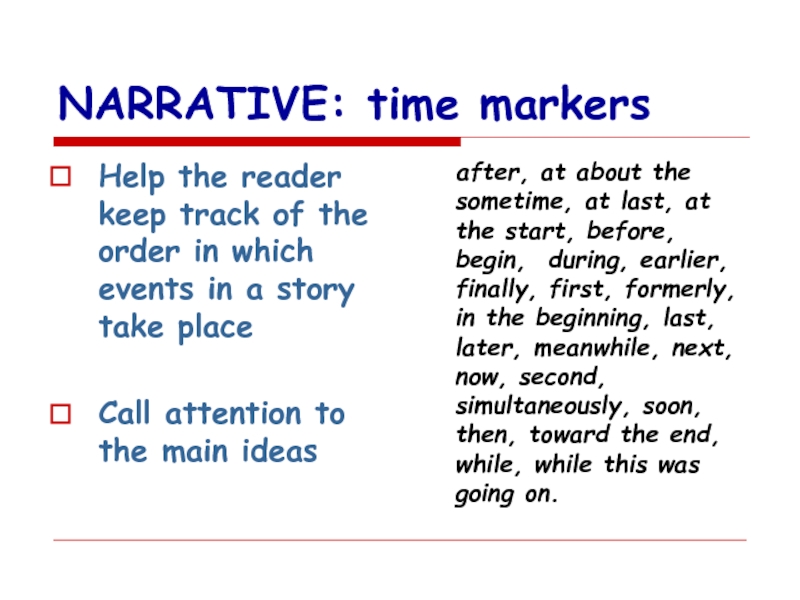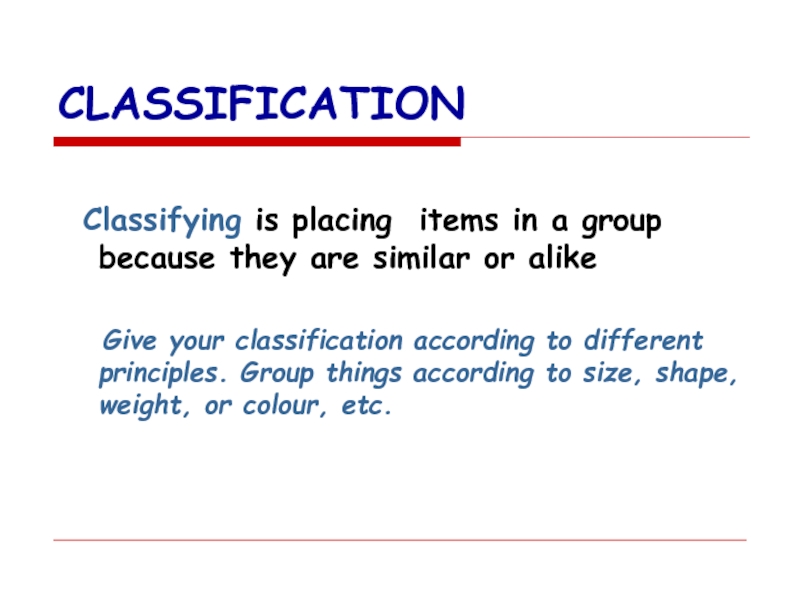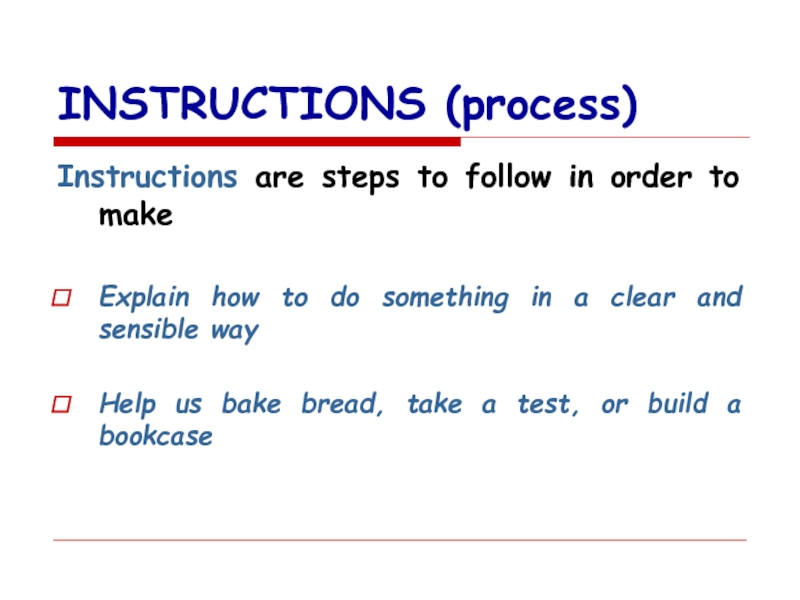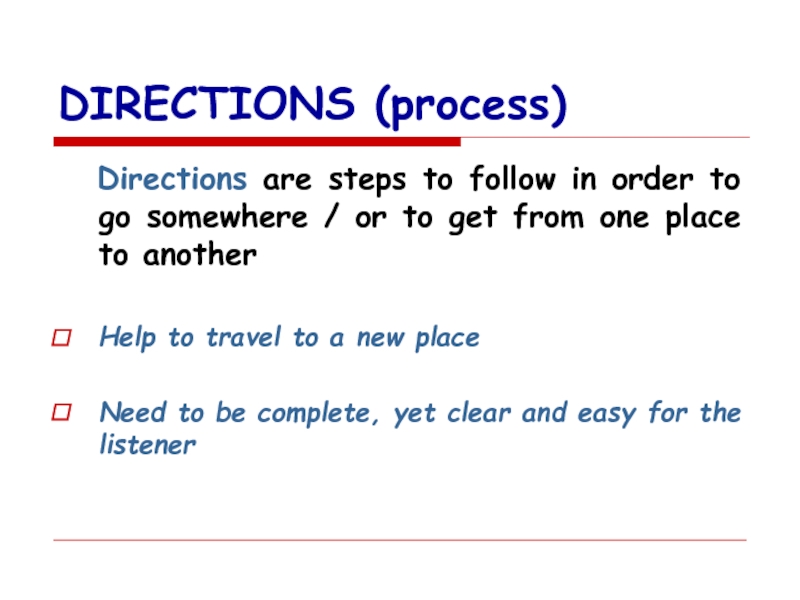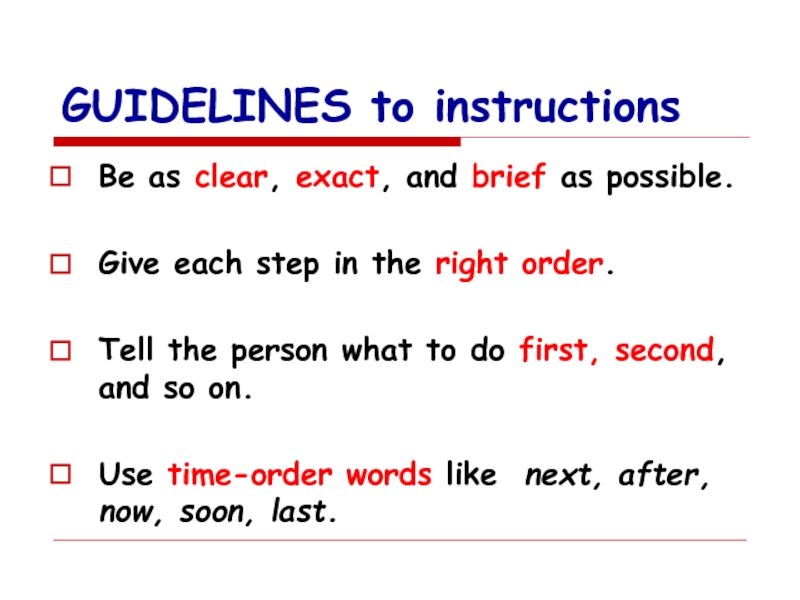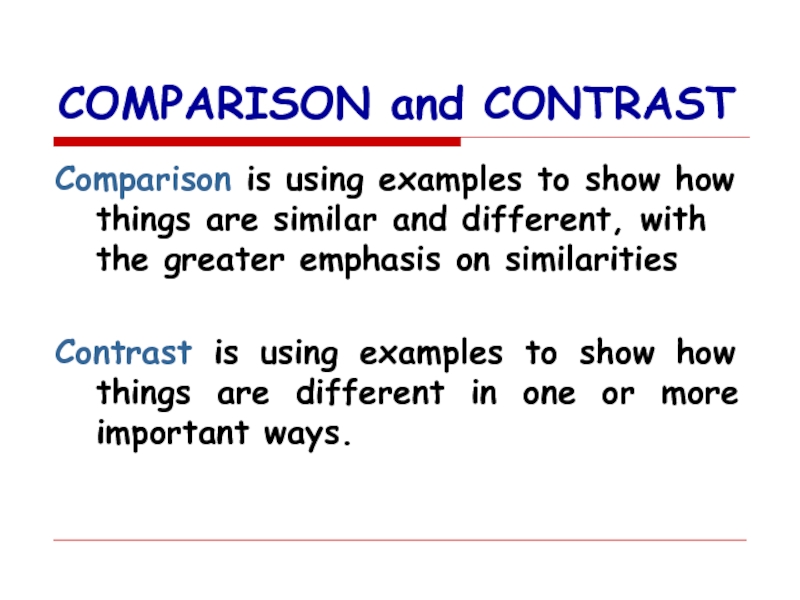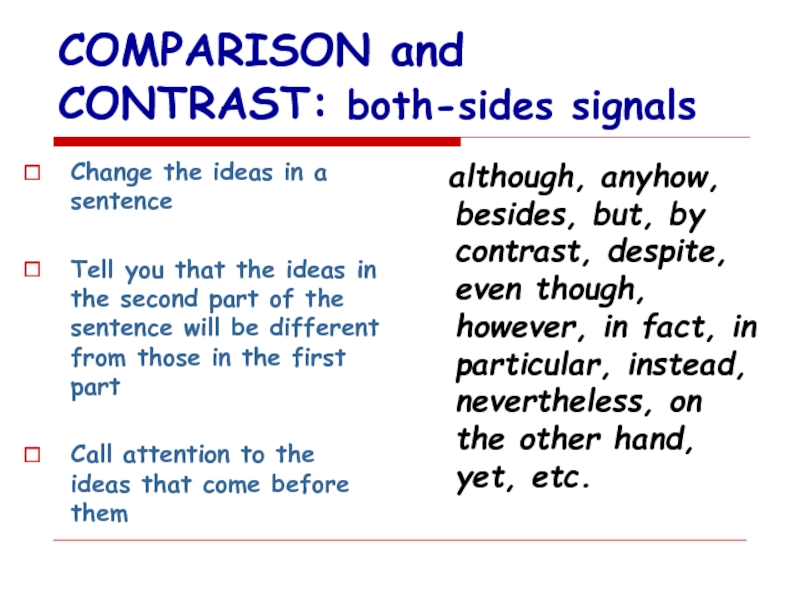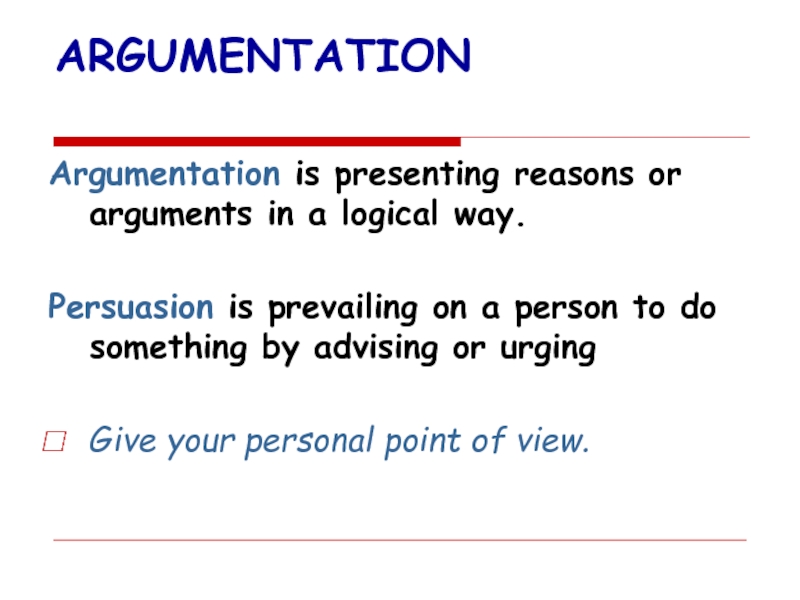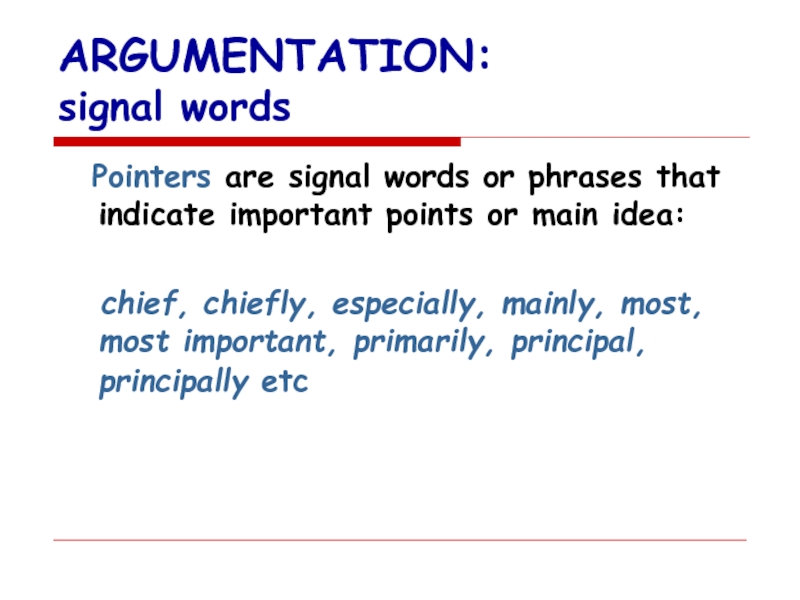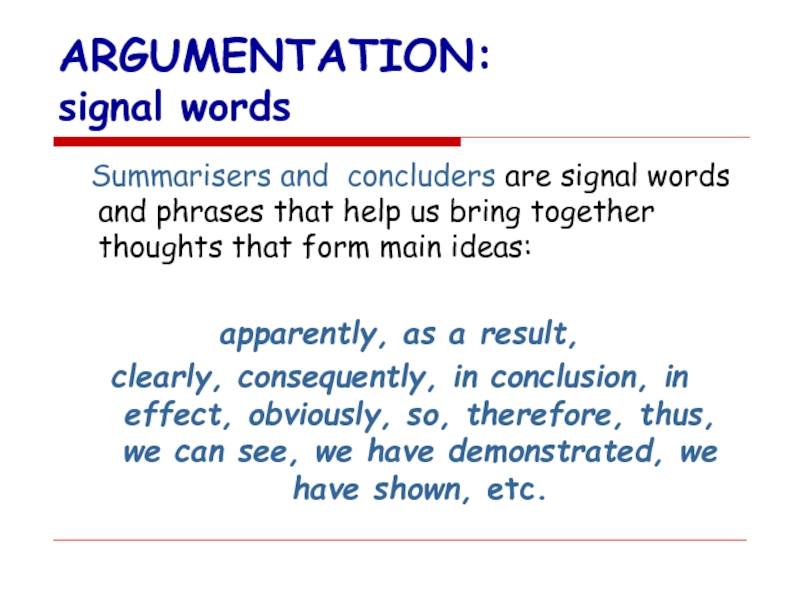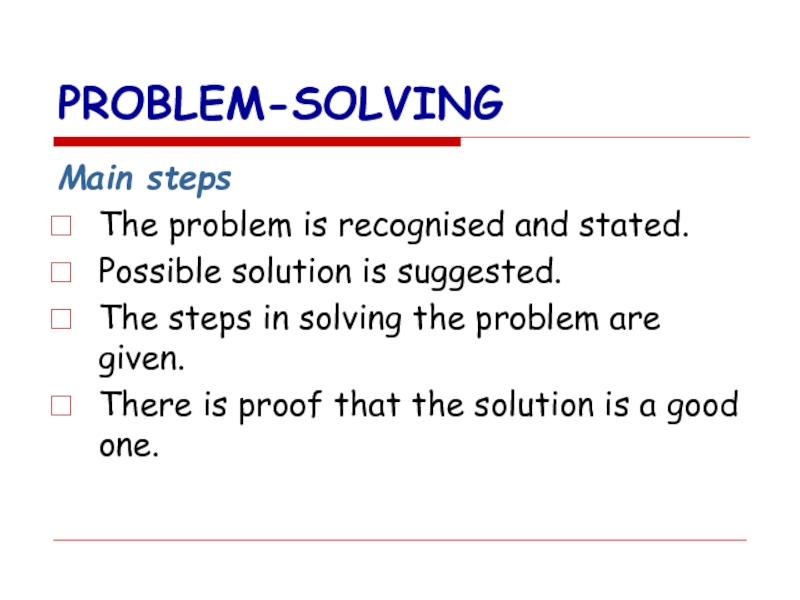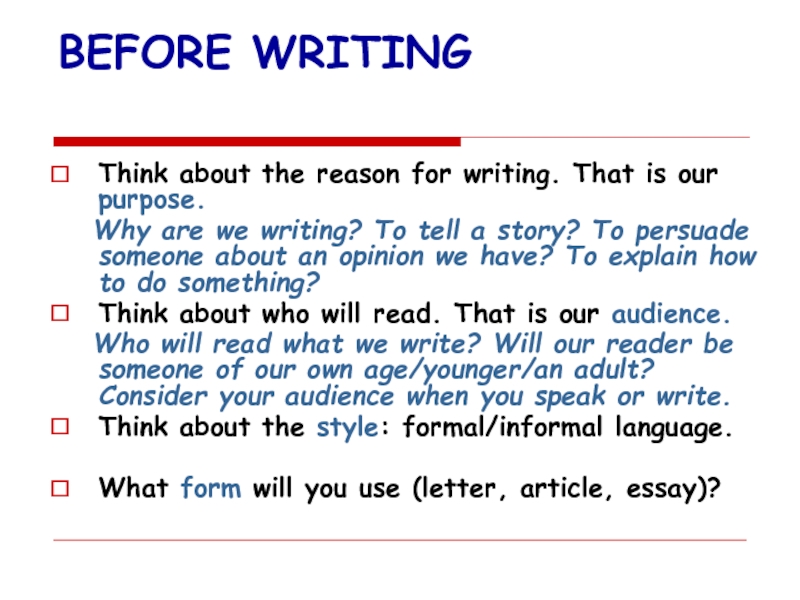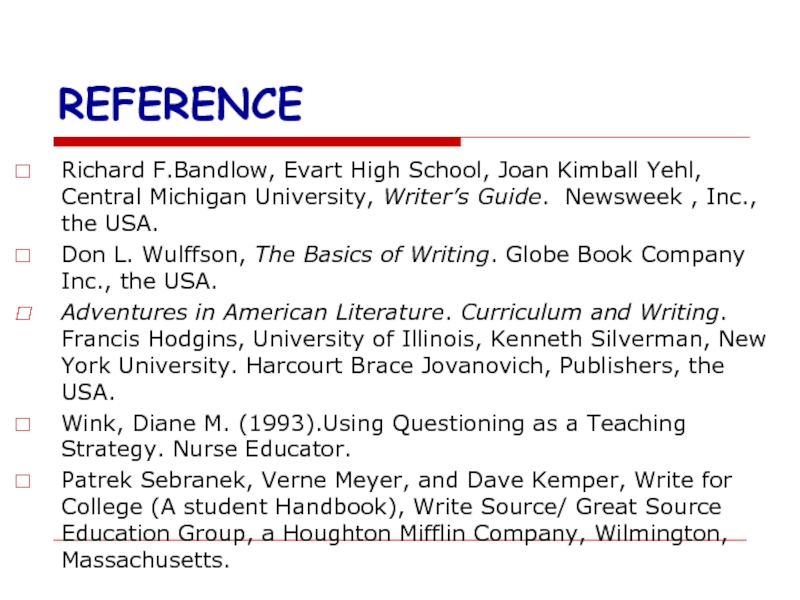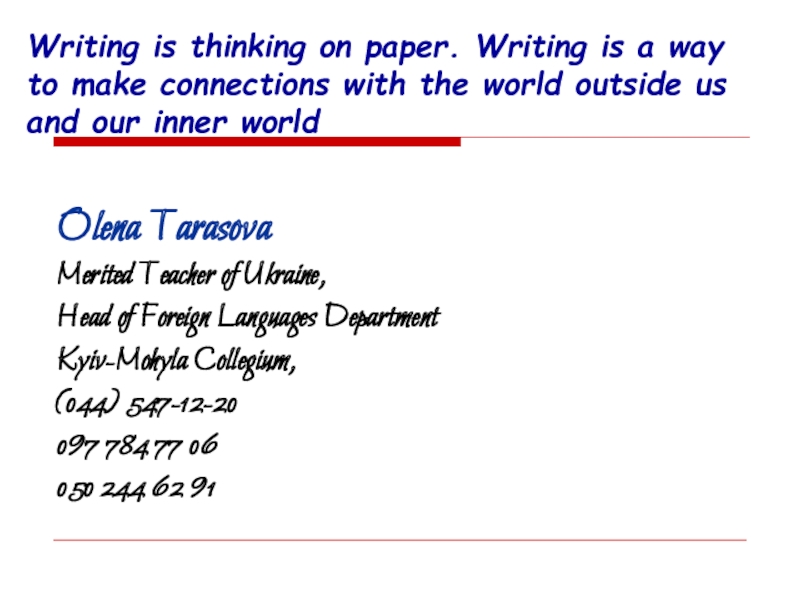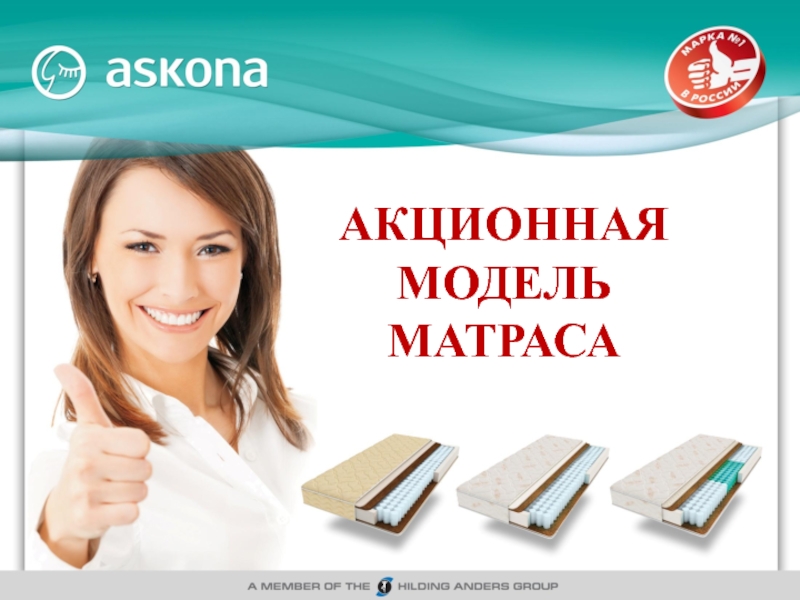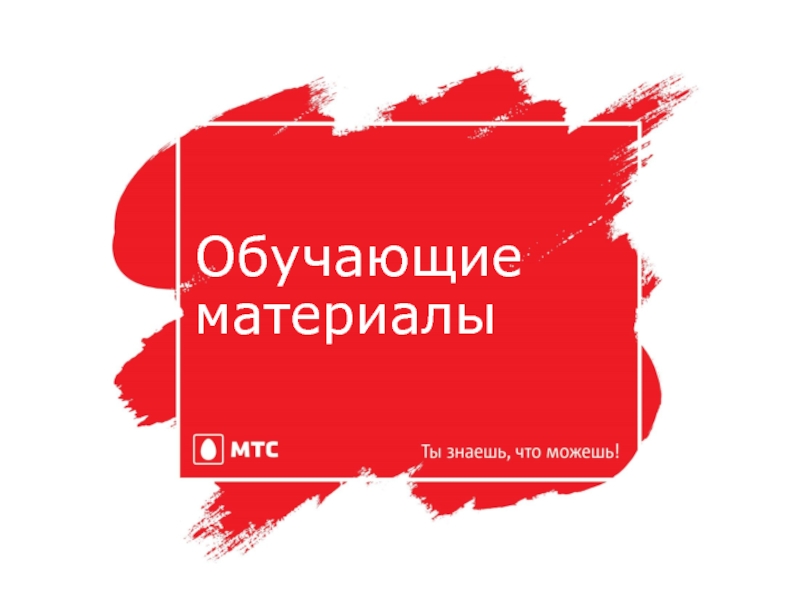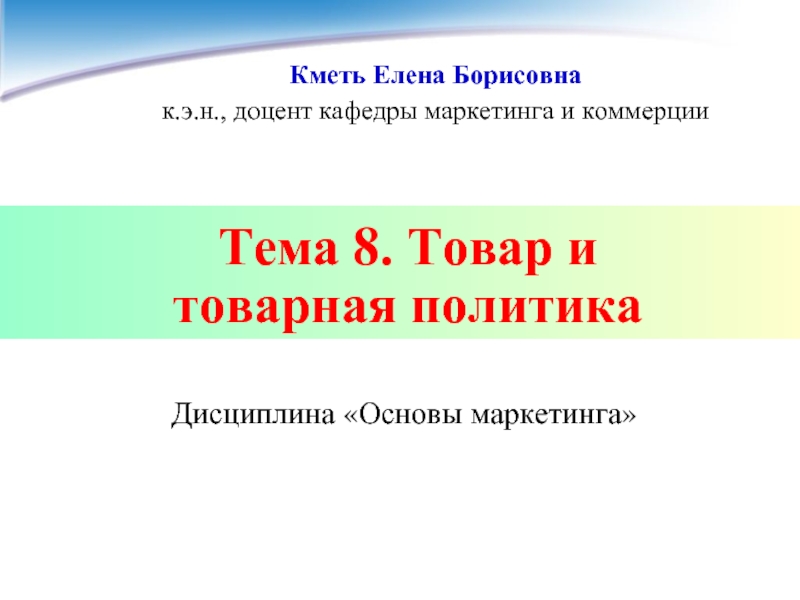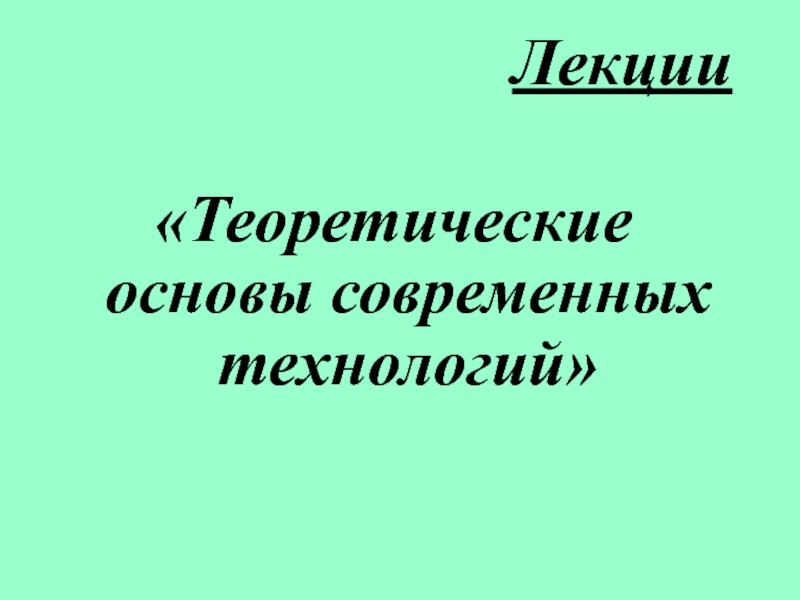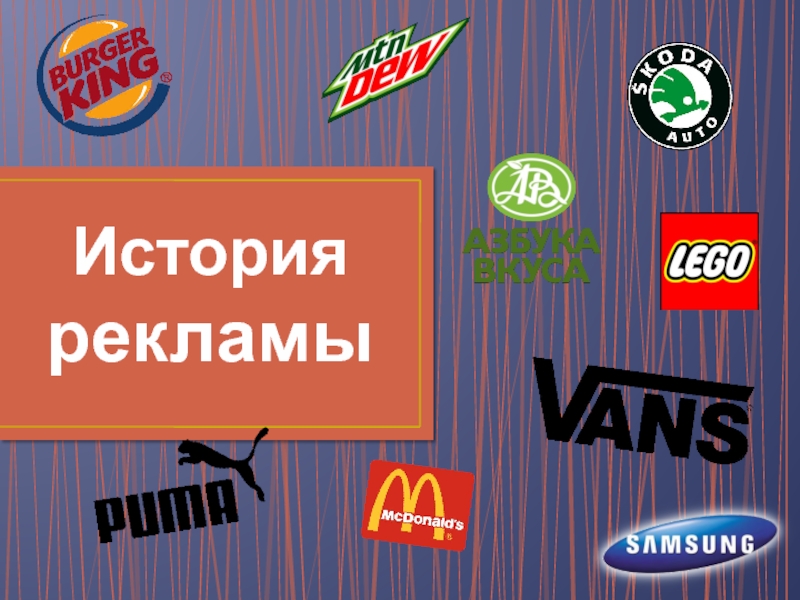- Главная
- Разное
- Дизайн
- Бизнес и предпринимательство
- Аналитика
- Образование
- Развлечения
- Красота и здоровье
- Финансы
- Государство
- Путешествия
- Спорт
- Недвижимость
- Армия
- Графика
- Культурология
- Еда и кулинария
- Лингвистика
- Английский язык
- Астрономия
- Алгебра
- Биология
- География
- Детские презентации
- Информатика
- История
- Литература
- Маркетинг
- Математика
- Медицина
- Менеджмент
- Музыка
- МХК
- Немецкий язык
- ОБЖ
- Обществознание
- Окружающий мир
- Педагогика
- Русский язык
- Технология
- Физика
- Философия
- Химия
- Шаблоны, картинки для презентаций
- Экология
- Экономика
- Юриспруденция
Writing: Apple activity презентация
Содержание
- 1. Writing: Apple activity
- 2. BASIC PATTERNS OF THOUGHT DEVELOPMENT
- 3. DESCRIPTION Description is painting pictures in words
- 4. DESCRIBING RULES 1. Before you describe sth:
- 5. DESCRIPTION: space markers in the centre to
- 6. DEFINITION Definition – stating
- 7. DEFINITION: add-ons Terms that let
- 8. NARRATIVE Narrative is writing that
- 9. NARRATIVE: time markers Help the reader keep
- 10. CLASSIFICATION Classifying
- 11. INSTRUCTIONS (process) Instructions are steps to follow
- 12. DIRECTIONS (process) Directions are steps
- 13. GUIDELINES to instructions Be as clear, exact,
- 14. COMPARISON and CONTRAST Comparison is using examples
- 15. COMPARISON and CONTRAST: both-sides signals Change the
- 16. ARGUMENTATION Argumentation is presenting reasons or
- 17. ARGUMENTATION: signal words Pointers
- 18. ARGUMENTATION: signal words Summarisers
- 19. PROBLEM-SOLVING Main steps The problem is recognised
- 20. BEFORE WRITING Think about the reason
- 21. REFERENCE Richard F.Bandlow, Evart High School, Joan
- 22. Writing is thinking on
Слайд 2 BASIC PATTERNS OF THOUGHT DEVELOPMENT
Specific patterns
PROCESS (How something works)
NARRATIVE
DESCRIPTION (How something/someone appears)
COMPARISON (How two things are alike/different)
CAUSE AND EFFECT (How one thing affects something else)
PROBLEM SOLUTION (How a problem can be solved)
CLASSIFICATION (How something can be categorised)
ARGUMENTATION (How a position or an opinion can be asserted and supported)
DEFINITION (How to explain or to make something clear and distinct)
Слайд 3DESCRIPTION
Description is painting pictures in words
Use your five senses: see, hear,
Use: figures of speech: metaphors, similes, personifications.
Vocabulary: fruit, shape (oval, round), taste (sweet, sour), feel (hard, smooth), colour (green, red, pink, yellow), ripe, juicy.
Grammar focus: 1) link/copular verbs + Adj. 2) Degrees of Comparison (adjectives, adverbs)
Слайд 4DESCRIBING RULES
1. Before you describe sth: ask, “Why is it unique?
2. Be specific/ Choose exact, precise words: complain instead of say, cottage/manor/block of flats instead of house, etc.
3. Use vivid words to describe: scarlet instead of red, thoughtful instead of nice, etc.
4. Use words that appeal to human senses: see, hear, smell, feel, taste
Слайд 5DESCRIPTION: space markers
in the centre
to the left/right
beside
on the far right
next to
on
at the bottom
above
over
middle
halfway
between
below
under, etc.
Слайд 6DEFINITION
Definition – stating the meaning; making definite, distinct,
Use your previous life experience and give a definition of the apple.
Name:
type/class/category
main characteristics and features
properties and peculiarities
qualities
family
conditions (of existence, living, growing, etc)
surrounding /environment
usage, etc.
Слайд 7DEFINITION: add-ons
Terms that let us know that other important facts
Add-ons signal us to look for main ideas.
also, and, another, besides, for example, for instance, further, furthermore, in addition, (even) more important, moreover, more than that, too, similarly, specially
Слайд 8NARRATIVE
Narrative is writing that relates an event or a
Tell how the apple turned to be here.
Use your imagination and previous experience.
Pay attention to the order of events and sequence.
Слайд 9NARRATIVE: time markers
Help the reader keep track of the order in
Call attention to the main ideas
after, at about the sometime, at last, at the start, before, begin, during, earlier, finally, first, formerly, in the beginning, last, later, meanwhile, next, now, second, simultaneously, soon, then, toward the end, while, while this was going on.
Слайд 10CLASSIFICATION
Classifying is placing items in a group
Give your classification according to different principles. Group things according to size, shape, weight, or colour, etc.
Слайд 11INSTRUCTIONS (process)
Instructions are steps to follow in order to make
Explain how
Help us bake bread, take a test, or build a bookcase
Слайд 12DIRECTIONS (process)
Directions are steps to follow in order to
Help to travel to a new place
Need to be complete, yet clear and easy for the listener
Слайд 13GUIDELINES to instructions
Be as clear, exact, and brief as possible.
Give each
Tell the person what to do first, second, and so on.
Use time-order words like next, after, now, soon, last.
Слайд 14COMPARISON and CONTRAST
Comparison is using examples to show how things are
Contrast is using examples to show how things are different in one or more important ways.
Слайд 15COMPARISON and CONTRAST: both-sides signals
Change the ideas in a sentence
Tell
Call attention to the ideas that come before them
although, anyhow, besides, but, by contrast, despite, even though, however, in fact, in particular, instead, nevertheless, on the other hand, yet, etc.
Слайд 16ARGUMENTATION
Argumentation is presenting reasons or arguments in a logical way.
Persuasion is
Give your personal point of view.
Слайд 17ARGUMENTATION:
signal words
Pointers are signal words or phrases that
chief, chiefly, especially, mainly, most, most important, primarily, principal, principally etc
Слайд 18ARGUMENTATION:
signal words
Summarisers and concluders are signal words and
apparently, as a result,
clearly, consequently, in conclusion, in effect, obviously, so, therefore, thus, we can see, we have demonstrated, we have shown, etc.
Слайд 19PROBLEM-SOLVING
Main steps
The problem is recognised and stated.
Possible solution is suggested.
The steps
There is proof that the solution is a good one.
Слайд 20BEFORE WRITING
Think about the reason for writing. That is our purpose.
Why are we writing? To tell a story? To persuade someone about an opinion we have? To explain how to do something?
Think about who will read. That is our audience.
Who will read what we write? Will our reader be someone of our own age/younger/an adult? Consider your audience when you speak or write.
Think about the style: formal/informal language.
What form will you use (letter, article, essay)?
Слайд 21REFERENCE
Richard F.Bandlow, Evart High School, Joan Kimball Yehl, Central Michigan University,
Don L. Wulffson, The Basics of Writing. Globe Book Company Inc., the USA.
Adventures in American Literature. Curriculum and Writing. Francis Hodgins, University of Illinois, Kenneth Silverman, New York University. Harcourt Brace Jovanovich, Publishers, the USA.
Wink, Diane M. (1993).Using Questioning as a Teaching Strategy. Nurse Educator.
Patrek Sebranek, Verne Meyer, and Dave Kemper, Write for College (A student Handbook), Write Source/ Great Source Education Group, a Houghton Mifflin Company, Wilmington, Massachusetts.
Слайд 22 Writing is thinking on paper. Writing is a way to make
Olena Tarasova
Merited Teacher of Ukraine,
Head of Foreign Languages Department
Kyiv-Mohyla Collegium,
(044) 547-12-20
097 784 77 06
050 244 62 91
